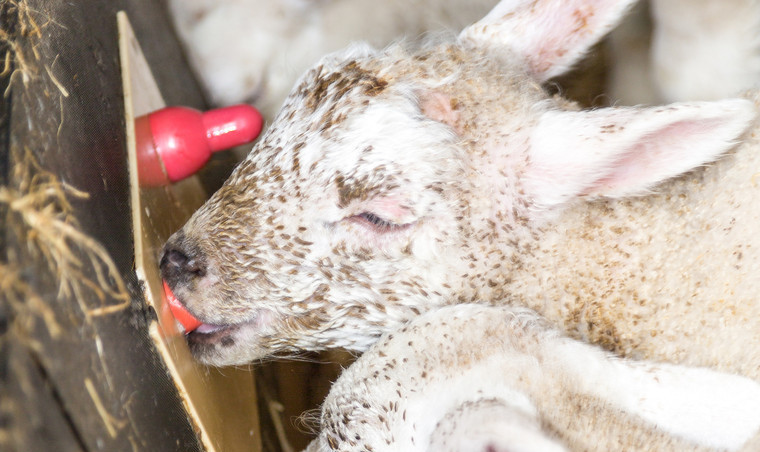According to results from the annual Volac Lamlac surplus lamb rearing intentions survey, carried out at the end of 2019, only 20% of shepherds plan to feed the industry recommended 210ml per kg of newborn lamb liveweight.
“Just before Christmas we received feedback from more than 300 UK sheep producers about their surplus lamb rearing practices. Encouragingly, more than 85% said they always make sure they administer colostrum to any surplus lambs.
However, many should feed a greater quantity to give these valuable young animals the best start in life,” says survey co-ordinator Samantha Sampson from Volac.
Ms Sampson explains that all lambs reared off the ewe must be fed good quality colostrum or a high-quality replacement if maternal colostrum is unavailable, such as Volac Volostrum, as soon as possible after birth.
“Ideally, colostrum needs to be administered within the first two hours of life, with at least 210ml/kg liveweight being taken on board within the first 24 hours as a minimum.”
As the UK sheep industry moves into its peak lambing season, Volac is urging sheep producers to pay particular attention to this early life colostrum feeding.
“Vital antibodies cannot get into the unborn lamb via the placenta, so must be transferred via colostrum,” Ms Sampson says.
“Colostrum is the key to survival for newborn lambs. It is a highly nutritious energy source that not only provides vital antibodies to protect against disease, but also gives the lamb energy to get up onto its feet and get going. The first few hours are key, as this is when the gut wall is at its most permeable, allowing the large antibody molecules to be absorbed.”
Maximising the number of lambs sold per ewe put to the ram is one of the key benchmarks for a successful sheep enterprise. With lamb prices forecasted to remain firm during 2020, it looks like it will undoubtedly pay to make every lamb count.
“Neonatal lamb mortality continues to be a challenging issue for the sheep industry but improving colostrum management and feeding practices could make a significant difference on many farms. Once surplus lambs have received enough of this essential first feed during the first 24 hours of life – or a proven alternative such as Volac Volostrum – they can then move onto a performance-formulated ewe milk replacer such as Lamlac to make the most of their significant early life growth potential.”




